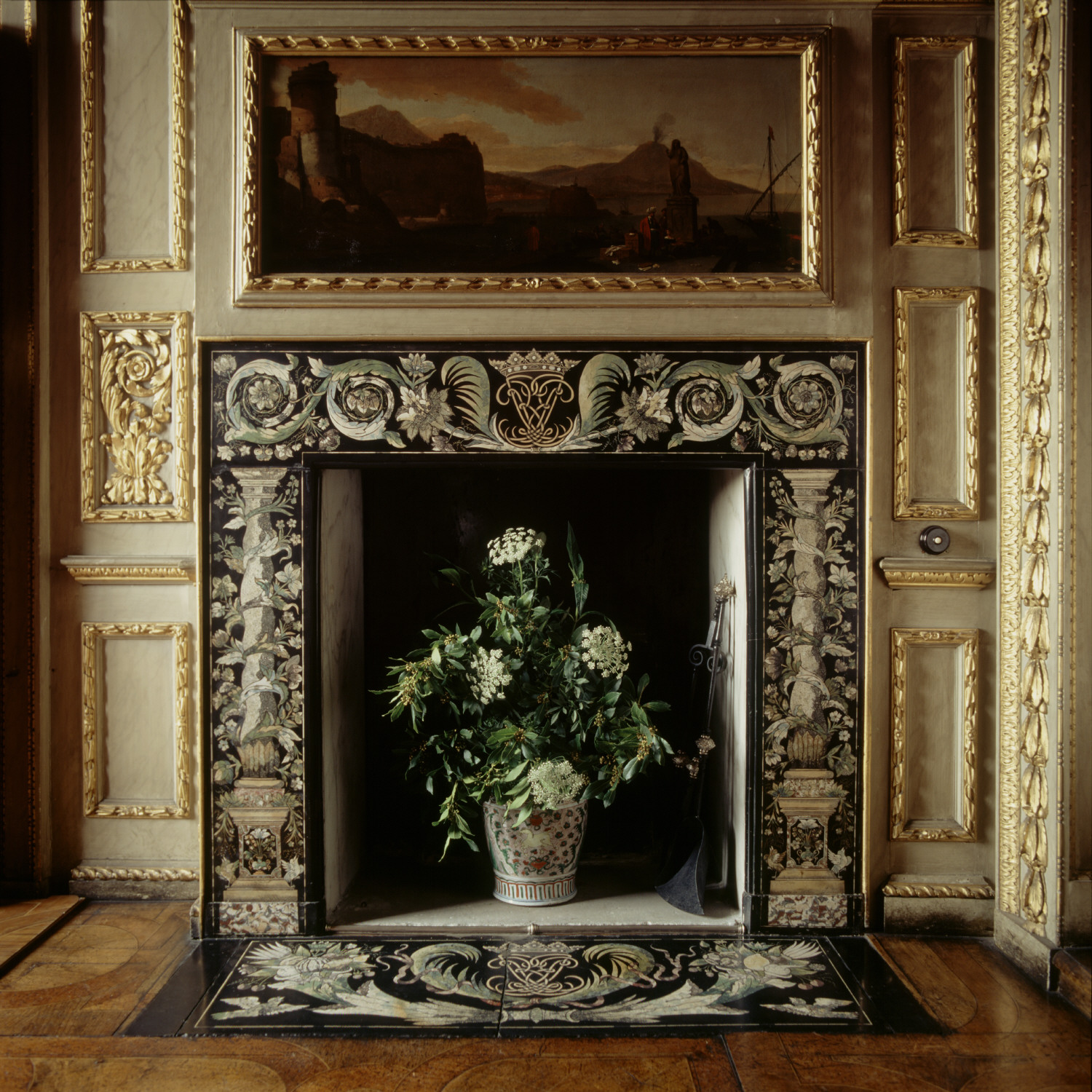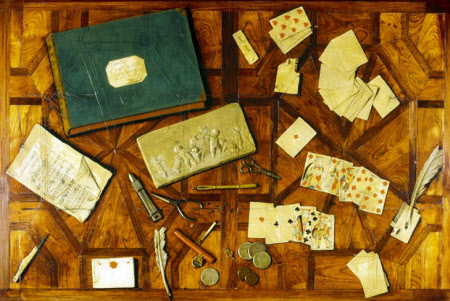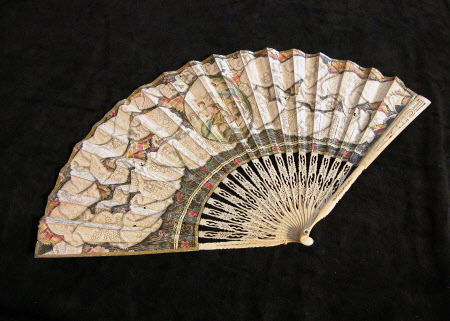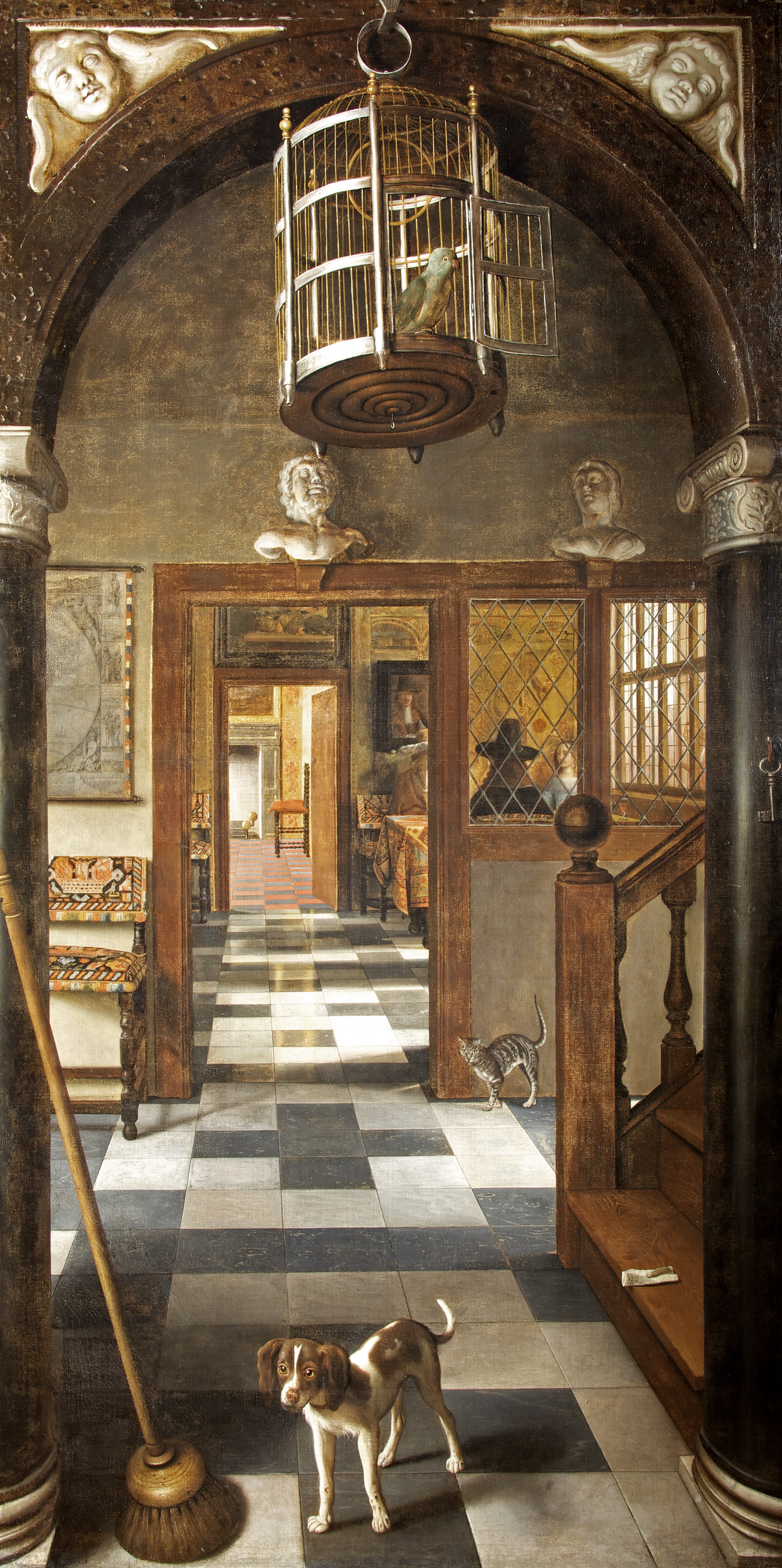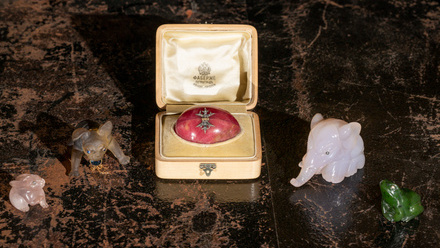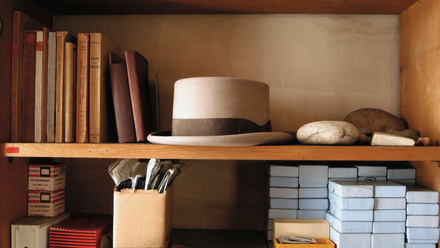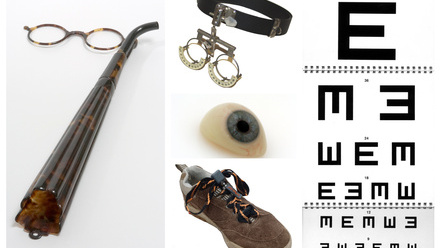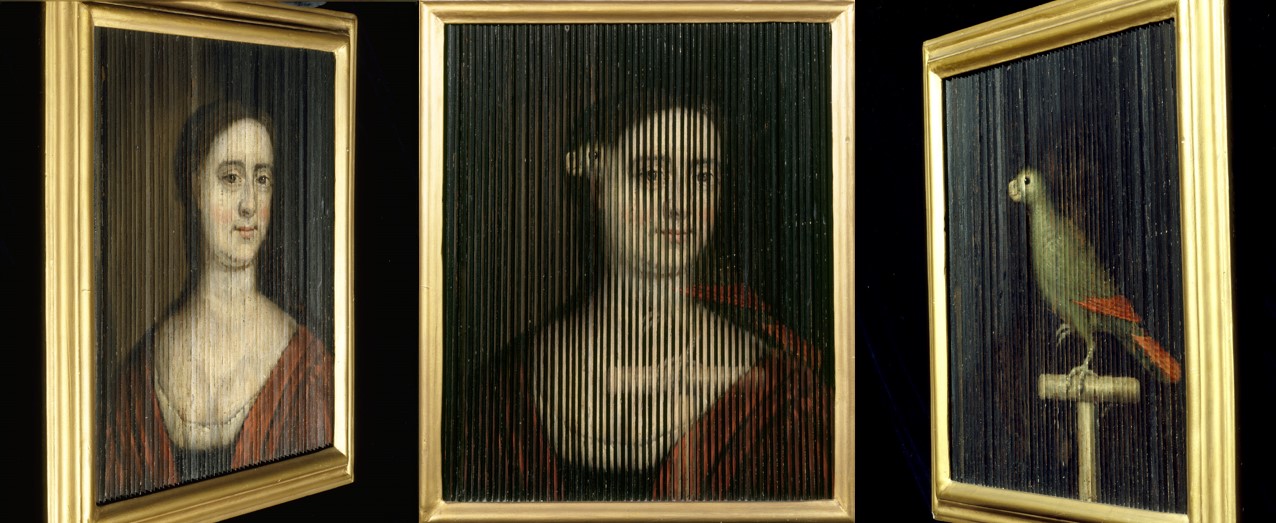
From ancient cave art to bold modern art, creativity has always been at the heart of what makes us human. With creativity comes playfulness, and a desire to surprise and trick the eye of the viewer. One dramatic way for artists to do this is through the technique of trompe l’oeil, French for ‘deceive the eye’, to create three-dimensional spaces on two-dimensional surfaces. Other artists experimented with different materials to create visual surprises. Here are some of our favourite examples from the extraordinary collections and interiors at the National Trust…
Need a change of scene?
The painted curiosity above, to be found at Clevedon Court in Somerset, gives the viewer a choice of images. Look closely at this portrait of a young woman and the head of a green parrot can be seen above her ear. This is an anamorphic or two-way painting, an optical illusion created by painting on prism-shaped strips of wood. Viewed from the left, we see a lady but viewed from the right we see a parrot. References to ‘turning pictures’ like this are found in Shakespeare’s works. We don’t know who painted this picture, but it is dated to the early 1700s. (Two-way painting, with woman and parrot / Clevedon Court / Catalogue reference - NT624189)
Smoking hot design
Stepping into this room at Mottisfont, you might think you’re entering a grand gothic space. A closer look reveals that the columns, moulded plasterwork, ledges and urns are not real. This theatrical illusion was created in 1939 by artist Rex Whistler for his patron, the society hostess Maud Russell. As well as architectural features, the design contains a smoking urn and small objects including a paint pot on a ledge, as if the artist has just set it down. Whistler was a master of complex works that deceived the eye. He also painted a dramatic mural at Plas Newydd on Anglesey. (The Whistler Drawing Room / Mottisfont Abbey)
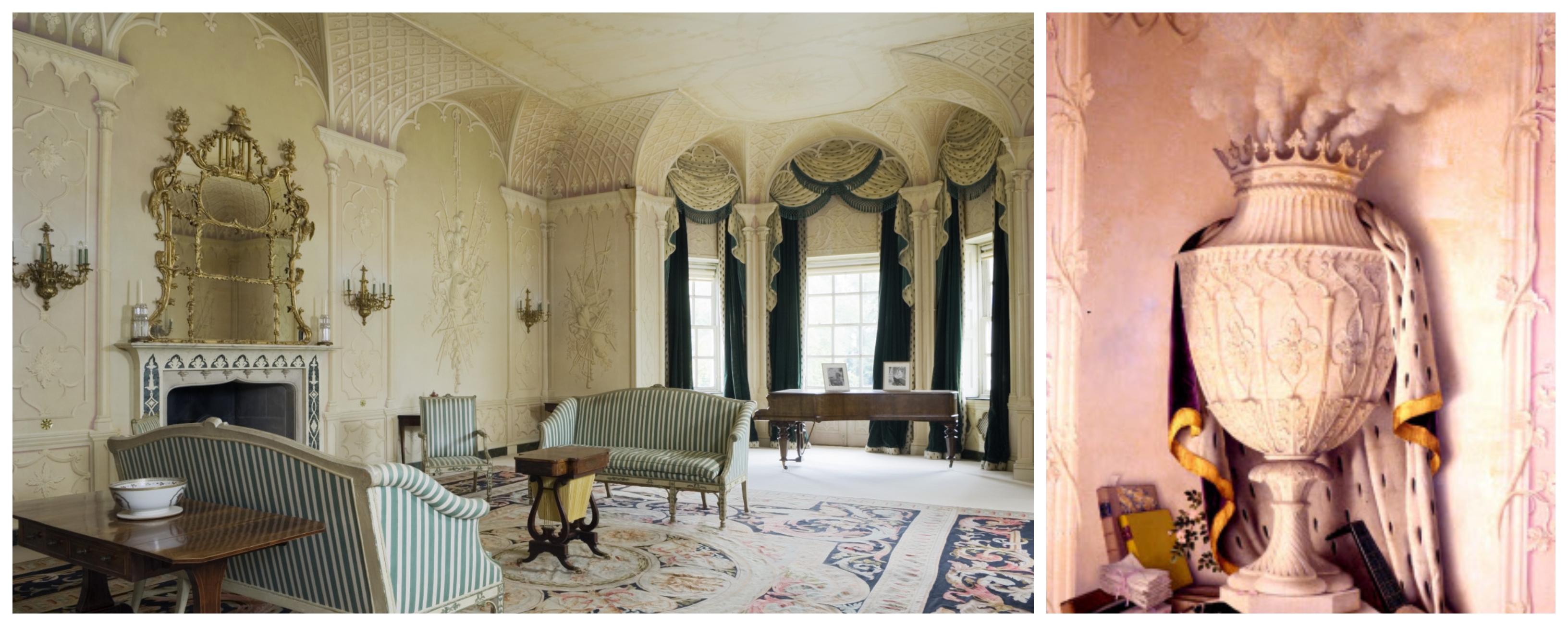
Cabinet of curiosities
The central inner section of this ornate 17th century cabinet opens to reveal a surprise – the unknown but talented cabinet maker has created a hidden theatrical miniature hall, backed with mirrors and supported by golden columns. But this cabinet also showcases the artistry of nature. The stone used to decorate the drawer fronts is pietra paesina, or ‘ruin marble’. This rare limestone, from northern Italy, is entirely natural but looks to the viewer as if an artist has drawn a rocky or ruined landscape. Only when you look more closely is the natural pattern of the stone revealed. (Cabinet on Stand / Ham House and Garden / Catalogue reference - NT1140050.1)
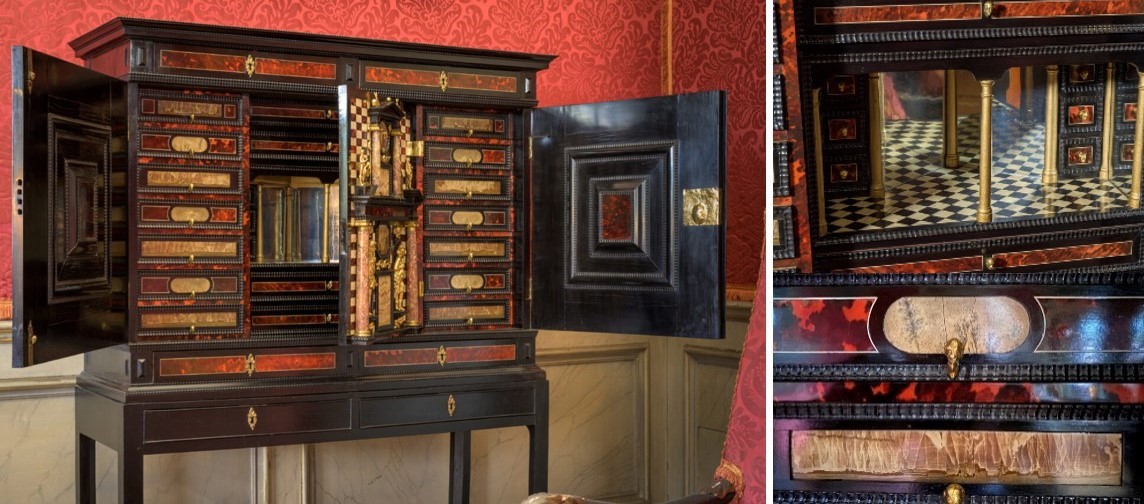
Find out more
- National Trust Collections - Explore more treasures
- Cabinet Secrets - The hidden wonders inside Ham House
- Doorway at Dyrham video - Explore the details and where it sits in the house
- Blog - Discover more curious collections from around the country and much more
Read our earlier posts for more highlights from the National Trust's collections:

